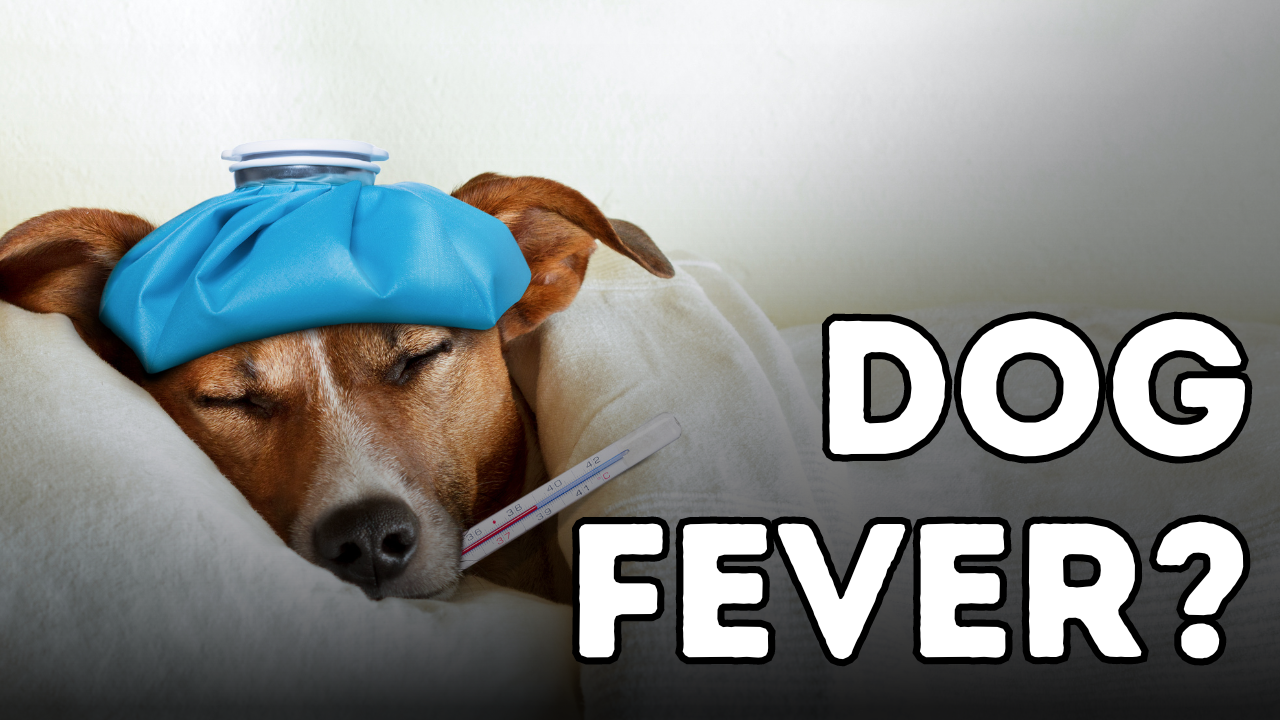What to Do When Your Dog Has a Fever: Safe Home Remedies for Managing Your Dog’s Fever

Being sick is NOT fun… and I and our team member Dan can personally attest to that 🙁
Night sweats… .no energy… . sore throat… .When your dog or cat has a fever, they are experiencing much the same thing we do.
Unfortunately there are very few safe options that we can give our pets to help lower a fever, except CBD (Cannabidiol). And earlier animal research has hinted that fever triggered by a virus could be treated using CBD… .
Here is a good option:
Dr. Jones’ Ultimate CBD for Dogs and Cats is a Full Spectrum CBD supplement in 100% Organic Cold Pressed Hemp Oil.


As a practicing veterinarian, I often encounter concerned pet owners when their beloved dogs or cats show signs of fever. It’s important to understand what symptoms to look out for, the potential causes, and effective solutions to manage this condition.
Signs of Fever in Pets
The most obvious symptom of fever in dogs and cats is an elevated body temperature, typically above the normal range. You may notice that your pet has a decreased appetite and seems less energetic than usual. Their ears might feel unusually hot to the touch, and you might observe excessive panting or shivering. These are common signs, similar to what humans experience when they have a fever.
Causes of Fever
A fever generally indicates that your pet’s body is fighting an infection, which could be either bacterial or viral. The elevated temperature creates a less favorable environment for the pathogens, slowing their growth. However, a significant concern with fever is the risk of dehydration, especially if your pet stops drinking water. The normal body temperature for dogs is about 101 degrees Fahrenheit (38 degrees Celsius), and for cats, it’s approximately 102 degrees Fahrenheit (38.5 degrees Celsius). A temperature of 103.5 degrees Fahrenheit (39.5 degrees Celsius) or higher is considered feverish.
Initial Steps and Solutions
Checking the Temperature: The first step if you suspect your pet has a fever is to check their temperature using a rectal thermometer. If it reads 103.5 degrees Fahrenheit or higher, it confirms the presence of a fever.
Hydration is Key: Ensuring your pet stays hydrated is crucial. Offer fresh water at various spots around your house. If they refuse to drink, gently administer water using an eyedropper or a turkey baster. Adding a bit of Pedialyte to replenish electrolytes or offering flavorful liquids like chicken broth can also help.
When to Call the Vet: If the fever persists for more than 24 hours and your pet is not drinking, it’s essential to consult your veterinarian immediately.
Applying a Cool Compress: You can use a cold, damp cloth on your pet’s belly to help reduce their temperature. This is often effective in providing quick relief.
Medicinal and Herbal Remedies
Aspirin for Dogs: Aspirin can be used to reduce fever in dogs (never in cats) at a dose of one 325 mg tablet per forty pounds of body weight every twelve hours. Always consult with a vet before administering any medication.
Herbal Treatments:
- Echinacea, Myrrh, and Sage: These herbs are excellent for their antimicrobial properties. A combined tincture dose of one drop per pound of body weight twice daily can be beneficial.
- Elderberry and Honey: Effective against both viral and bacterial infections. Mix concentrated elderberry powder with honey (half a teaspoon per 20 lbs) and administer twice daily.
- Olive Leaf Extract: Known for its antibacterial and antiviral properties, the dose can range from 1mg to 5mg per pound twice daily. Start with the lower dosage and observe how your pet responds.
Homeopathic Options
Ferrum Phos: For general fever without other severe symptoms, a dose of 30C every four hours for two to three days is recommended.
Hepar Sulph: This can be given as one 30C tablet every six hours for up to three days to help reduce fever.
Arnica: Useful for managing the discomfort that comes with fever. Administer one 30C tablet per forty pounds of body weight every four to six hours.
Cannabidiol (CBD): Research has shown that CBD may help treat fever from various pathogens, with a recommended dose of 3mg per 10 lbs once to twice daily.

It’s wise to keep treatments like CBD on hand for when your dog or cat develops a fever. CBD is particularly safe for cats and can be an effective over-the-counter option for managing fever without the side effects associated with some traditional medications. For more information, you can explore our CBD products at Dr. Jones’ ULTIMATE CBD for Dogs and Cats, designed to support your pet’s health safely and effectively.
Our CBD supplement is here:Dr Jones’ ULTIMATE CBD for Dogs and Cats

Thank you for all the information on dog fevers and what to do. I greatly appreciate you!!?